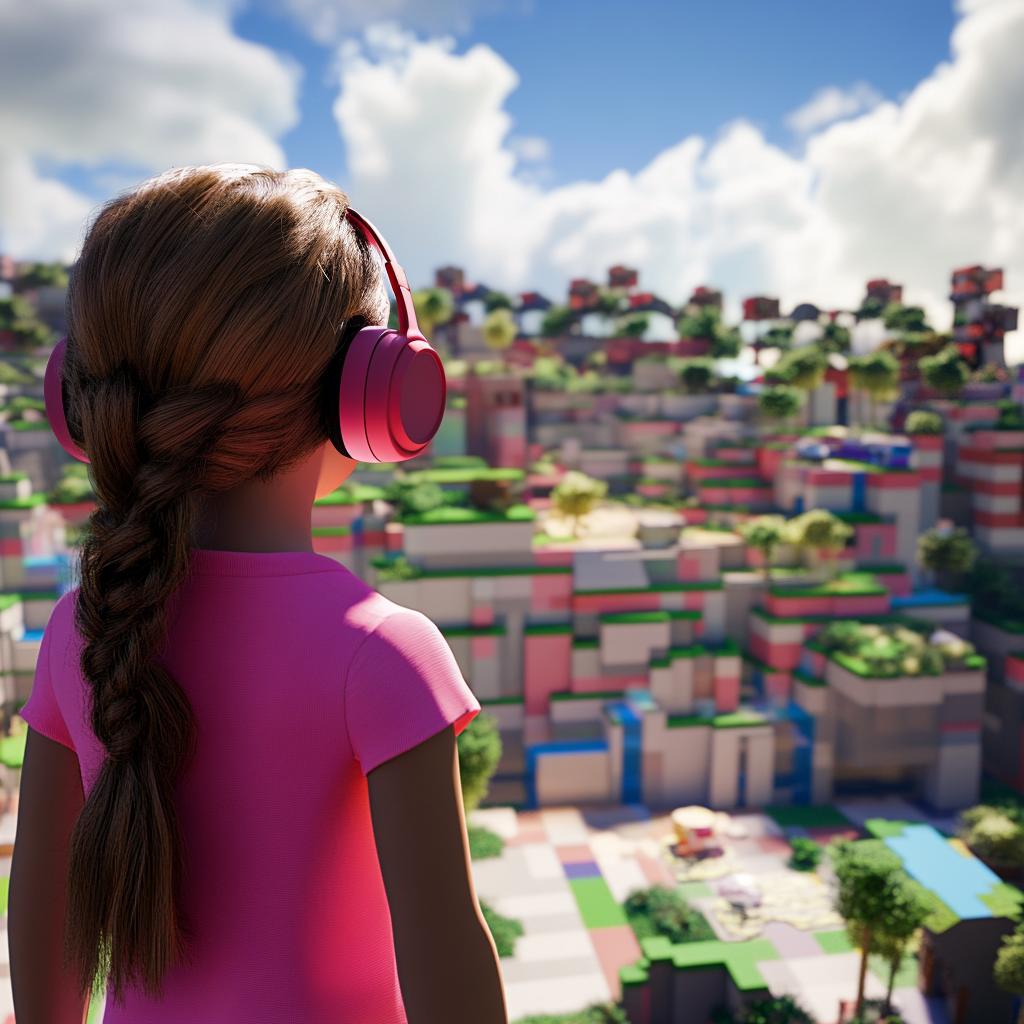Living in the Virtual – Two Worlds, One Life
Is it possible to truly “experience life” in a virtual world? After spending over 16 years immersed in virtual spaces, we are convinced that the answer is yes. But what exactly does living in the virtual mean? Is it simply spending hours a day glued to a device? And how does living in a virtual world differ from gaming?
Let’s explore.
Gaming vs. Virtual Worlds: What’s the Difference?
Most of us are familiar with popular games like Grand Theft Auto (GTA) and Fortnite, where players can lose themselves for hours, if not days. Some might argue this is a form of living in the virtual world, especially since you can chat with friends or even get food delivered while playing. But is this truly living in the virtual sense, or just an extended escape?
Now, consider virtual worlds like Second Life—places where there’s no endgame, no missions or objectives, just a space to socialize, shop, and create.
As Philip Rosedale, the founder of Second Life, once said, “I’m not building a game. I’m building a new country.“
His vision was for a user-driven world where creativity and identity exploration took center stage, not prescribed quests.
Both gaming and virtual worlds have grown immensely, but how do they compare in terms of living a “virtual life”?
The Growth of Gaming
Gaming is now the fastest-growing industry, even outpacing film and music. Video games span a huge variety of genres, from massive multiplayer online games (MMOGs) to casual and social games, each offering different levels of immersion.
In the U.S., 63% of people regularly play casual games, while action and shooter games come next at 39%. The global gaming market is valued at a staggering $385 billion, with 85% of revenue coming from free-to-play games like Fortnite, that monetize through premium content.
As gaming continues to grow, it’s evolved from a niche hobby into one of the largest entertainment markets worldwide. But is this really living in the virtual world, or simply part of a broader entertainment landscape?
The Rise of Virtual Worlds
Virtual worlds are becoming increasingly prominent, particularly as businesses target Gen Z and large corporations. Unlike traditional games, these spaces focus on social interaction, creativity, and commerce. From attending virtual concerts to shopping for digital goods, these worlds are quickly becoming integral parts of daily life.
- Hence, solutions like www.meetwork.ai (which Enrapture developed).
In 2023, we saw major events in the metaverse, including concerts from stars like Ariana Grande and Travis Scott. Fortnite’s event featuring Galactus attracted 15.3 million gamers, while Travis Scott’s concert drew a staggering 45.8 million attendees. These massive events showcased the growing potential of virtual worlds for social interaction and entertainment.
Moreover, the first-ever Metaverse Beauty Week in June 2023, hosted by CULT, bridged virtual and physical realms, with the spotlight on top beauty brands in London and online platforms. The statistics below showcase people’s preference for Metaverse for events and gaming.
- Fortnite’s event featuring Galactus attracted a staggering 15.3 million gamers and witnessed 3.4 million viewers across platforms like YouTube Gaming and Twitch.
- Topping the list of most attended Metaverse concerts are Travis Scott with 45.8 million viewers, Lil Nas X at 37 million, Ariana Grande with 27 million, 24KGoldn drawing 14.6 million, and 21 Pilots pulling in 13.4 million attendees.
As we move towards the end of 2024, the trend continues. Last year, Roblox players bought 1.8 billion avatar clothing items, showcasing the immense demand for virtual fashion. In fact, 80% of Gen Z report drawing physical style inspiration from their avatars.
What’s Next for Virtual Living?
The next phase of the Virtual worlds will likely be driven by marketing and advertising. Many brands have recognized its potential and are laying the foundation for their virtual presence.
While virtual worlds and gaming seem to be on parallel tracks, they’re increasingly overlapping. More people, especially younger generations like Generation Z and Generation Alpha, are choosing virtual spaces as their preferred social playgrounds. For Generation Alpha, platforms like Roblox and Minecraft are not just games, but social ecosystems where teamwork and interaction are highly valued.
However, the rise of virtual worlds doesn’t come without concerns. Around 18% of people voice worries about exposure to inappropriate content in the Metaverse, while 26% fear an increase in cybercrime. Additionally, over half (54%) of those surveyed said they would create an avatar that’s different from their real-life appearance, reflecting the blurred lines between virtual and real identities.
Generation Alpha: The First Digital Natives
Generation Alpha, born into a digital-first world, is significantly shaped by their millennial parents, who have embraced social media as a way to document and share their children’s lives. As a result, much of Generation Alpha has been online since birth. This generation is also the first to grow up immersed in remote learning, tablet devices, and ubiquitous streaming services, forming early habits around these technologies. We argue that this generation is also the first to grow up aware of the worries of social media and the internet, differently from Gen Z. Artificial intelligence (AI) will play an increasingly prominent role in their lives, from everyday interactions with voice assistants like Siri and Alexa to the use of advanced language models like ChatGPT.
The COVID-19 pandemic will likely have an even greater influence on Generation Alpha than on any previous generation. Some experts have even dubbed them “Generation C” or “Generation COVID” because their formative years coincide with the global health crisis and its aftermath. The pandemic accelerated pre-existing trends in technology, pushing digital communication and remote interactions into the forefront of their daily lives, shaping their behaviors, attitudes, and habits in ways that will have long-lasting effects.
Conclusion: Two Worlds, One Life
In the end, virtual worlds and games aren’t replacing each other; they’re establishing their own distinct markets. As both industries grow, so too does the potential for people to live, work, and socialize in these spaces. Whether you’re perfecting your skills in a game or exploring new identities in a virtual world, the possibility of living in both the real and virtual is no longer science fiction—it’s becoming a reality.
Living in the virtual world means more than just spending hours on a device; it’s about creating meaningful experiences in a space that complements, rather than replaces, the real world. And as these virtual spaces expand, so do the opportunities to live, earn, and grow in two worlds at once.
Additional Information
For readers interested in diving deeper into these trends, we are excited to share that one of our academic research papers was recently published by ARMG Publishing in the SocioEconomic Challenges journal.. Titled “Exploring Team Collaboration in the New Metaverse (The 3D-AI Internet),” the paper explores the innovative ways teams can collaborate in this evolving digital landscape.
You can read the full paper here: Exploring Team Collaboration in the New Metaverse (The 3D-AI Internet) | ArmgPublishing

